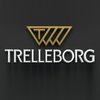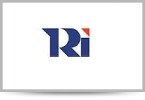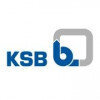Filter interviews by
Stauff India Design Engineer Interview Questions and Answers for Experienced
Stauff India Design Engineer Interview Experiences for Experienced
1 interview found
Interview Questionnaire
2 Questions
- Q1. What is the difference between ISO and ASME standard.
- Ans.
ISO is an international standard while ASME is an American standard for engineering design and manufacturing.
ISO is recognized globally while ASME is mainly used in the United States.
ISO covers a wide range of industries while ASME is primarily focused on mechanical engineering.
ISO standards are voluntary while ASME standards are mandatory in some industries.
ISO standards are developed by the International Organization...
- Q2. What is FMEA and what do you do in FMEA.
- Ans.
FMEA stands for Failure Mode and Effects Analysis. It is a systematic approach to identifying and preventing potential failures in a product or process.
FMEA is a risk assessment tool used in engineering and manufacturing.
It involves identifying potential failure modes, their causes, and the effects of those failures.
The goal is to prioritize and address the most critical failure modes to prevent them from occurring.
FME...
Top trending discussions






Interview questions from similar companies

I applied via Recruitment Consultant and was interviewed before Sep 2020. There were 3 interview rounds.
Interview Questionnaire
2 Questions
- Q1. Previous company work experience
- Ans.
In my previous role, I led a team in developing scalable software solutions, enhancing system performance and user experience.
Led a team of 5 engineers to develop a cloud-based application that improved data retrieval speed by 30%.
Implemented Agile methodologies, resulting in a 25% increase in project delivery speed.
Collaborated with cross-functional teams to integrate user feedback, enhancing product usability.
Mentore...
- Q2. Plans in next 5 years
- Ans.
I plan to continue developing my technical skills and taking on leadership roles within the company.
Pursue advanced technical certifications
Lead cross-functional teams on complex projects
Mentor junior engineers
Explore opportunities for innovation and process improvement
Collaborate with senior management to set strategic goals
Interview Preparation Tips

(2 Questions)
- Q1. Stress Strain curve
- Q2. IS codes related to steel structures

I applied via Naukri.com and was interviewed in Jun 2024. There were 3 interview rounds.
Solving questions paper
CAD &Solid work test
(2 Questions)
- Q1. Project Handling experience
- Q2. Salary negotiation

I appeared for an interview in Nov 2024.
(4 Questions)
- Q1. Wind calculation as per IS code
- Ans.
The procedure for wind calculation as per IS code involves determining the design wind speed, selecting the appropriate terrain category, and calculating the wind pressure.
Determine the design wind speed based on the location and height of the structure.
Select the appropriate terrain category (rural, urban, etc.) as per IS code guidelines.
Calculate the wind pressure using the formula provided in the IS code.
Consider fa...
- Q2. SFD and BMD of cantilever beam
- Q3. Staad model for fixed pole
- Ans.
A STAAD model for a fixed pole is a structural analysis and design model used to determine the stability and strength of a pole that is fixed in place.
In a STAAD model for a fixed pole, the pole is typically modeled as a vertical member with fixed supports at the base.
The model considers factors such as wind loads, dead loads, and any other relevant loads that may act on the pole.
The analysis helps in determining the s...
- Q4. Design of Square base plate
- Ans.
Key considerations in designing a square base plate
Ensure the base plate is large enough to support the load without excessive deflection
Select appropriate material and thickness to meet structural requirements
Consider the connection details for attaching the base plate to the structure
Account for any potential corrosion or environmental factors that may affect the base plate
Include provisions for anchor bolts or other...
Interview Preparation Tips

I appeared for an interview before Jun 2024, where I was asked the following questions.
- Q1. Describe your previous work
- Ans.
I have worked on various design projects, focusing on product development and optimization in engineering applications.
Led a team in designing a new consumer electronics product, resulting in a 20% reduction in manufacturing costs.
Collaborated with cross-functional teams to improve product functionality, enhancing user experience based on feedback.
Utilized CAD software to create detailed 3D models and prototypes, strea...
- Q2. What are technical problem you had solved?
- Ans.
I solved various technical problems, including optimizing designs and troubleshooting manufacturing issues.
Redesigned a component to reduce weight by 20%, improving overall product efficiency.
Developed a new testing protocol that decreased failure rates by 15%.
Collaborated with cross-functional teams to resolve a critical manufacturing bottleneck, increasing output by 30%.
Implemented a CAD software upgrade that enhance...

Design Engineer Interview Questions & Answers
Sagar Asiaposted on 8 Dec 2021
Interview Questionnaire
1 Question
- Q1. Tool test and return test
Interview Preparation Tips

Senior Engineer Interview Questions & Answers
Valmont Structuresposted on 30 Jun 2022

(1 Question)
- Q1. General discussion of your work history
(1 Question)
- Q1. Stream technical question
General work related assignment
Interview Preparation Tips

I applied via Naukri.com and was interviewed before Feb 2023. There were 2 interview rounds.
Aptitude test is conducted by organization to know the problem solving ability of candidate.
(1 Question)
- Q1. What are the different types of connections in steel structures.
- Ans.
Different types of connections in steel structures include welded connections, bolted connections, and riveted connections.
Welded connections involve joining steel members by welding them together.
Bolted connections use bolts and nuts to connect steel members.
Riveted connections use rivets to connect steel members.
Other types of connections include pinned connections and moment-resisting connections.
Examples: Welded be...
Interview Preparation Tips

(2 Questions)
- Q1. What is QA and QC
- Ans.
QA stands for Quality Assurance and involves processes to prevent defects, while QC stands for Quality Control and involves processes to identify defects.
QA focuses on preventing defects in the product or service being delivered
QC focuses on identifying defects in the product or service being delivered
QA involves processes such as reviews, audits, and process improvements
QC involves processes such as testing, inspectio...
- Q2. Welding details
Interview Preparation Tips
Stauff India Interview FAQs
Tell us how to improve this page.
Stauff India Interviews By Designations
Interview Questions for Popular Designations
Design Engineer Interview Questions from Similar Companies
Stauff India Design Engineer Reviews and Ratings
based on 2 reviews
Rating in categories
|
Sales Manager
7
salaries
| ₹7.8 L/yr - ₹15.5 L/yr |
|
Production Manager
5
salaries
| ₹11.1 L/yr - ₹20 L/yr |
|
Assistant Manager
4
salaries
| ₹7.5 L/yr - ₹9 L/yr |
|
Applications Engineer
4
salaries
| ₹1.4 L/yr - ₹4.6 L/yr |
|
Sales Engineer
4
salaries
| ₹4 L/yr - ₹6.3 L/yr |

Europa Locks

Trelleborg

MITA

Tokai Rubber Auto Parts India
- Home >
- Interviews >
- Stauff India Interview Questions >
- Stauff India Interview Questions for Experienced















